Kiri-no-Ma
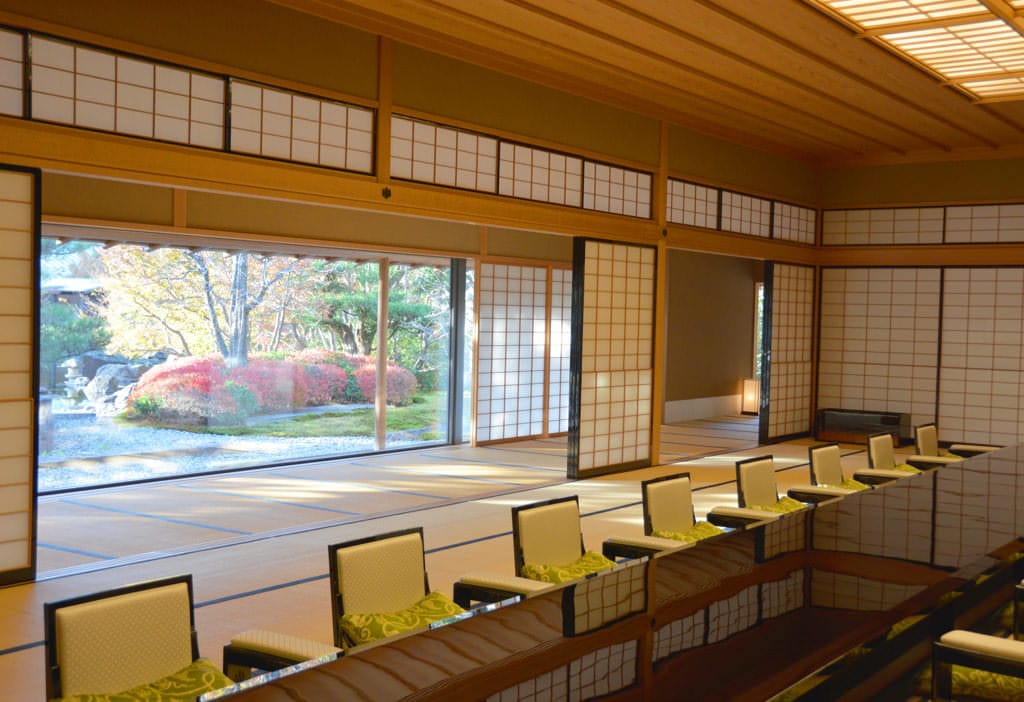
A Japanese Banquet Room Emblazoned with Goshichi no Kiri
Kiri-no-Ma is designed specifically for Japanese-style banquets where Kyoto cuisine is served.
It can accommodate up to 24 guests. The emblem known as goshichi no kiri can be seen in the decorative metal fittings,
the karakami paper on the sliding doors, and other design elements. Goshichi no kiri is the official emblem of the Japanese government.
Performances by geiko and maiko and koto music add a touch of elegance during the banquet.
Highlights
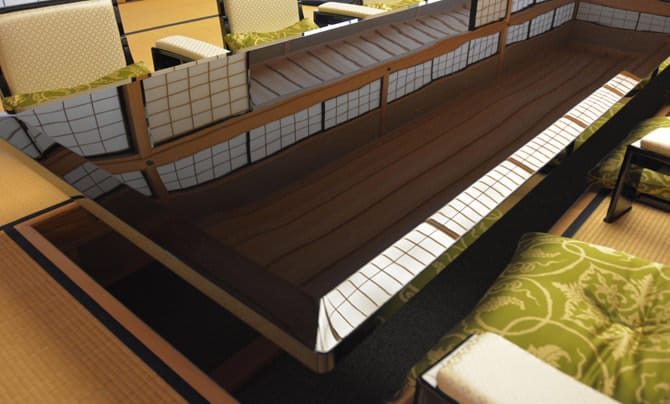
The Freshness of Japanese Architecture, Balanced with Deep Black Lacquer
The table is a continuous piece of lacquered wood, 12 meters in length. Its mirror-like surface reflects the verdant garden and the ceiling design, creating a rich landscape in the room. The floor is lowered so as to better accommodate guests unused to kneeling in the Japanese style.
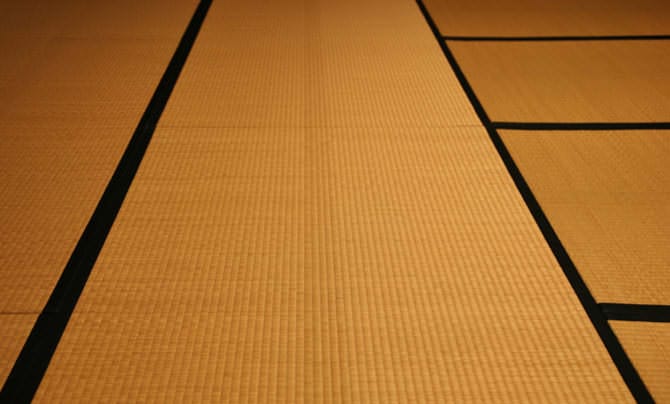
Tatami Flooring Created Through Traditional Artisanship
In a traditional technique called nakatsugi-omote, only the top-quality part of igusa rush plant is joined together in the middle to weave a complete tatami. The borders of each tatami mat are made from hemp dyed with natural indigo.
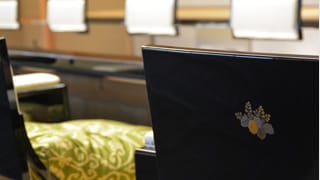
Japanese-style Chairs Painted with Goshichi no Kiri
The legless chairs feature a goshichi no kiri in makie lacquerwork. The leaves of the kiri (paulownia) subtly vary in color, with no two chairs quite alike.

Paulownia Emblem on the Sliding Doors
The paulownia emblem is rendered in shimmering white mica on the white karakami paper of the sliding doors, giving the room a deep, nuanced feel.
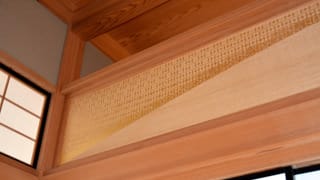
Sun and Moon: Kirikane in Two Designs to Ornament the Transom
Like the stage doors in Fuji-no-Ma, the ranma (transom) of Kiri-no-Ma is ornamented using kirikane technique. The name of this piece is Nichigetsu (Sun/Moon), and the dual motif is laid out to present a different aspect depending on the direction of the light.

![Kyoto State Guest House [SP]](https://www.geihinkan.go.jp/wp-content/themes/geihinkan/assets/img/kyoto/common/toplogo_kyoto_sp_bk_en.png)
![Kyoto State Guest House [PC]](https://www.geihinkan.go.jp/wp-content/themes/geihinkan/assets/img/kyoto/common/toplogo_kyoto_bk_en.png)